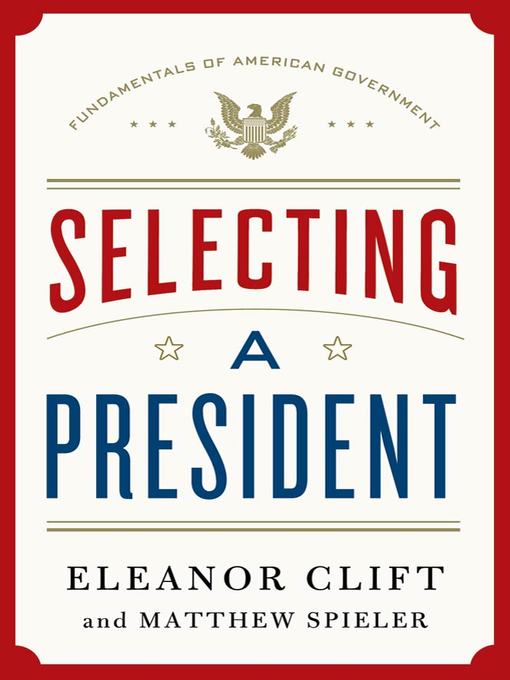
Selecting a President
Fundamentals of American Government Series, Book 1
کتاب های مرتبط
- اطلاعات
- نقد و بررسی
- دیدگاه کاربران
نقد و بررسی

April 1, 2012
The first in the publisher's Fundamentals of American Government series explains the machinery of our presidential electoral system. Political pundit Clift (Two Weeks of Life: A Memoir of Love, Death, and Politics, 2008, etc.) and policy analyst Spieler surely possess the firepower to compose a sophisticated, in-depth presentation about how Americans select their chief executive. They confine themselves here, however, to the basics. While not wholly without utility outside the classroom, their primer aims at high-school students or, say, immigrants contemplating citizenship. (If you can define the 30+ words in the glossary--e.g., "dark horse," "grassroots," "stump speech," "president-elect"--you probably don't need this book.) Delivering all necessary rudimentary information, the authors briskly cover the elements of a presidential contest from the early caucuses and primaries through the conventions, general election campaign, Election Day and inauguration. Whatever the topic, the authors regularly draw on historical examples to add a bit of merciful color to their simple presentation. Both major parties receive equal time: For every invocation of Ronald Reagan, Richard Nixon, John McCain or Herbert Hoover, there's one of FDR, William Jennings Bryan, Jimmy Carter or Bill Clinton. In addition to the glossary of elementary political terms, the appendix contains the presidential oath of office, the electoral vote tally for all past presidential candidates, some suggestions for further reading and the complete text of four consequential pieces of campaign rhetoric, including Senator Obama's 2004 nominating speech on behalf of John Kerry that spotlighted the newcomer from Illinois, and Hubert Humphrey's anti-segregation 1948 convention address. For beginners, the ABCs of the curious, occasionally baffling way we go about the important business of choosing a president.
COPYRIGHT(2012) Kirkus Reviews, ALL RIGHTS RESERVED.

April 1, 2012
Clift (contributing editor, Newsweek) and Spieler (political writer, Voterpunch.org) present the first offering in a new series on how American government works, aimed primarily at high school seniors and college freshmen. The authors concisely and objectively explain the basic structure of America's electoral system and skillfully use anecdotes from past campaigns to explore how the process has changed from the election of George Washington to that of Barack Obama. The entire chain of events from primaries to election and taking office is covered, but the authors do not get overly technical. The book does a great job of bringing election history to life through stories and examples (e.g., the down-to-the-last-ballot Bush-Gore race of 2004 and the 2008 Democratic primary race), rather than sticking with a textbook formula found in more advanced academic tomes such as Nelson W. Polsby and others' Presidential Elections: Strategies and Structures of American Politics. VERDICT In our hot election year, this one is valuable for both high school students and adults looking for a simple explanation of the often complicated election process. Its focus makes it most appealing for current collections.--Carrie O'Maley, Indianapolis P. L.
Copyright 2012 Library Journal, LLC Used with permission.

April 1, 2012
By the time most voters in the U.S. get into the voting booth to elect a president, many crucial decisions have already been made with or without their participation. This guide offers information on the complete process, from the Iowa caucuses to the inauguration. Veteran political reporter Clift and policy analyst Spieler offer details on the election cycle, from the primaries through the party nominating conventions, from the counting of the popular vote to the pledging of delegates to the Electoral College. They detail the two-year process that begins with exploratory committees formed two years into a president's term and just after the midterm elections as prospective candidates begin to gauge the political climate and their chances. The book ends with the contest on a Tuesday in early November every four years. Along the way, Clift and Spieler offer historical perspective on the role of alternative parties, variations on primary election rules from state to state, campaign financing, and the controversies surrounding recent elections. Given that we're already in primary season, this is not the best-timed resource, but it is still valuable.(Reprinted with permission of Booklist, copyright 2012, American Library Association.)

























دیدگاه کاربران